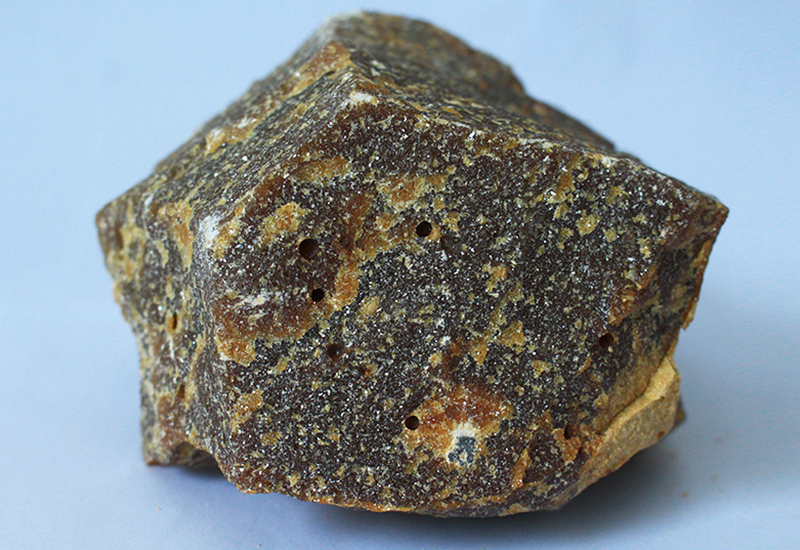Contact: Manager Xu
Phone: 1884264888
Phone: 0412-3388836
Website: en.lnqhnh.com
Business address: East of Zhongtai Village, Bali Town, Haicheng City, Anshan City, Liaoning Province
The traditional magnesia-carbon bricks made with synthetic tar binders according to the cold mixing process harden during the tar damage process and obtain the necessary strength, thus forming isotropic glassy carbon. This kind of carbon does not show thermoplasticity, which can relieve a large amount of stress in a timely manner during the baking or operation of the lining. The magnesia-carbon bricks produced with asphalt binders have higher high temperature plasticity due to the formation of anisotropic graphitized coke structure during the asphalt carbonization process. 97 fused magnesia
Therefore, the crack resistance of bricks made by asphalt bonding is higher than that of asphalt bonded bricks. However, one of the disadvantages of asphalt-bonded bricks is that thermal mixing is required during production, and a brick mold preheating device is required. In this paper, the method of manufacturing magnesia carbon bricks by cold mixing process is described. The finished brick has a low elastic modulus, so that it can relieve stress during operation and use. Ordinary coal tar pitch is harmful to environmental protection due to the presence of benzodiazepine. A special binder that meets environmental protection requirements with low benzodiazepine content is selected.
1 Introduction
Magnesia-carbon bricks were developed 35 years ago, and the bricks are now widely used for building steel furnaces. Magnesia-carbon bricks are also widely used in other kilns, such as double-chamber steelmaking furnaces, and Rll-type circulating vacuum treatment devices. Traditionally, such bricks are manufactured using synthetic tar binders in accordance with the cold mixing process, and asphalt binders in accordance with the hot mixing process. Both binding agents have their own advantages and disadvantages. The main advantage of magnesia-carbon bricks produced with tar binders is that it is possible to use cold mixing technology for production, which is different from using asphalt binders and does not require heavy equipment and manual labor. On the other hand, bricks produced with asphalt binders have better thermoplasticity. During use, it has high crack resistance because it can absorb the stress generated during operation. The main content of this research work is to make comprehensive use of the advantages of the two systems and develop a cold mixing process.

Fused Magnesium
2 experiments
2.1 Raw materials
As raw materials, fused magnesia with a purity of 97.5%, FC brand flake graphite with a purity of 95%, and standard coal tar pitch are used. Due to the presence of polyaromatic hydrocarbons, such as benzopyridine, it is harmful to the environment. The content of benzopyridine in coal tar pitch is between 10000~15000mg·kg-1, and the international standard stipulates that the content of benzopyridine should be 50mg·kg-1 (see German standard TGRS551). In order to comply with this strict requirement, a special binder with a benzopyridine content of 300 mg·kg-1 was selected. The data on the viscosity performance obtained from the supplier shows that the dynamic viscosity of this binder is between the resol resin and the novolac resin, which is completely acceptable for production.
2.2 Preparation of molding mixture and molding of samples
Usually in order to make tar-bound bricks, we use 2% thin tar. During the experiment, the thin asphalt was gradually replaced with thin tar, and the changes in the formability and performance of the bricks were observed. In order to conduct a thorough comparative study, five molding mixtures were produced.
Prepare the molding mixture in the inclined high-strength mixer of Eirih Company and leave it for 0.5h. The bricks are molded under 200mpa pressure. The formed bricks were dried at 200°C for 20 hours, and then cooled under natural conditions. Cut the sample according to the requirements of the following various tests: open porosity, bulk density, compressive strength at room temperature and residual carbon rate in bricks.
2.3 Test of specimen
Experiment in our laboratory. Choose 3 bricks randomly from each ingredient, and calculate the average index in order to reduce the error.
The effect of dehydrating (water absorbing) agents is well known. As such an additive, sulfur powder is selected. Experiments were conducted with different amounts of sulfur. It was found that after adding sulfur, the strength increased by 20%, but the open porosity and bulk density of the material after carbonization treatment did not improve. However, when 10% dehydrating agent and thin pitch are added, both indexes of compressive strength after forming and after carbonization are improved. When the amount of sulfur added was further increased, the strength did not improve.
3 Industrial test
In order to carry out industrial tests, the ingredient CZ was selected and made into bricks. Three ladle linings were built with bricks made of the above ingredients. The service life of the lining is 109 times, 103 times and 105 times (an average of 109 times). The service life of traditional magnesia carbon bricks combined with tar is 103 times.
4 Conclusion
Choosing a suitable bonding agent can make the brick achieve higher performance. The bonding agent used meets the requirements of environmental protection and safety (see standard TGRS551). Obviously, the increase in the life of the lining is good for users. In terms of cost, the special asphalt binder used is similar to tar.
Welcome to inquire
188-4206-4888
General Manager: Manager Xu
Website: www.lnqhnh.com
Address: East of Zhongtai Village, Bali Town, Haicheng City, Anshan City, Liaoning Province

scan it
Mobile site